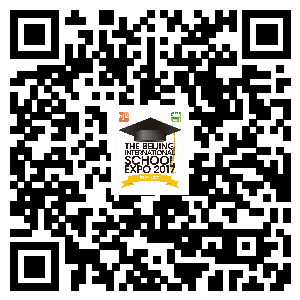[Editor’s Note: To meet schools featured in the School Choice Guide, register for the free Beijing International School Expo, where you can save time, energy, and money in you school comparisons. Scan the QR code below.]

“Bilingual” isn’t a curriculum in itself, but is an approach used by numerous schools to deliver instruction. Parents should note that for a native pronunciation, learning must take place before age 7. While fluency can be achieved at any age, the feat becomes harder as a child or adult grows older and if motivation wanes at any point.
What’s unique about a bilingual education?
A bilingual education seeks to put two languages in the part of the brain that considers a language as primary. This means the language is used as a skill rather than a subject. A good bilingual program will include both culture and language in multiple subjects, as the two can’t be separated, and using both languages beyond studying grammar and topical vocabulary.
How is it applied?
The split between languages can be 50:50, 30:70, with co-teachers, split-days, or in rare cases, simultaneous teaching. Trilingual education might be available in some programs, such as Eduwings, where German is included. If a parent is committed to providing an academic atmosphere at home with the child’s native and home language, an immersion program can be created by sending an English-speaking child to a Chinese-only program, for example.
How well does this education system prepare students for the real world?
Many mid-manager jobs in international companies across the world require bilingualism as a minimum requirement. Another issue parents’ face is that children might become bilingual, but not bi-literate. At the International Montessori School of Beijing (MSB), “Dual-Language students benefit from full immersion in both English-language and Chinese-language curricula. Students graduate from MSB with a deeper cultural understanding of China as well as fluency and literacy in Mandarin and English.” MSB seeks to equip students “with the skills and attitudes they need to participate effectively in a globalized society.”
Where is it offered?
Many schools claim to be bilingual, when in fact the program offered is actually second language learning. A Chinese kindergarten might claim to be an English bilingual school, but English is taught as a subject or foreign language, with students meeting to speak and learn in English for only a forty minute period, five days a week or less.

Curriculum Spotlight: Adan Rubin, age 9, Grade 5, US, has attended the International Montessori School of Beijing (MSB) Dual Language Programme for 8 years. His father is British, and mother is Korean-American.
What was the most interesting project you completed this year?
My favorite tasks are my creative writing projects. When I’m writing I enjoy it so much I forget everything else around me. I create adventure stories with my friends in my free time. We pick a topic, such as zombies, and we develop a story about it. I also love to write in Chinese – I keep a journal in Chinese.
What are the challenges?
I write quickly in Chinese, and I put my thoughts down very fast. But the challenge of writing in Chinese is that, because it’s not my native language, I can’t express my full idea right away. It’s still really enjoyable though, because writing in Chinese really motivates me to learn new words. When I use new vocabulary in my writing, I understand the meaning better, and the words stick in my memory so I continue to use them. Repeating them in writing is another way of pushing the new words into my mind.
When I get stuck, I stop and ask a teacher and use a dictionary, though most often I ask my friends. That’s the great thing about having a class with a mix of native English and native Chinese speakers. We always help each other out. I help other people with their English, too.
This article originally appeared on page 10 of the 2017 issue of beijingkids School Choice Guide. Click here for your free online copy. To find out how you can obtain a hard copy, contact distribution@truerun.com.
Photo: Dave’s Studio




